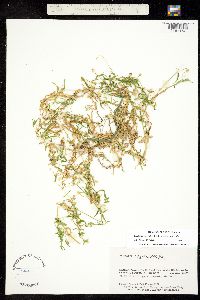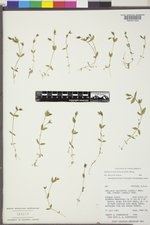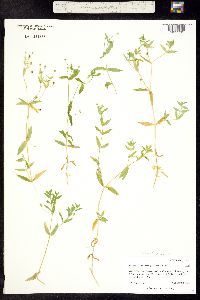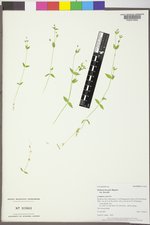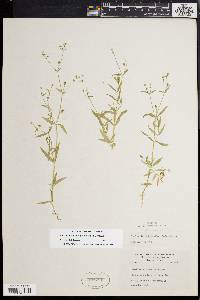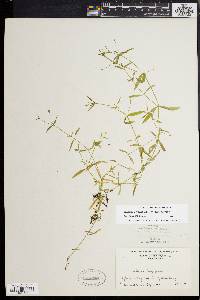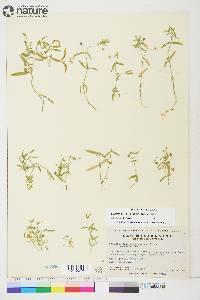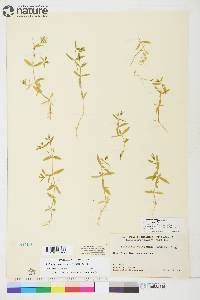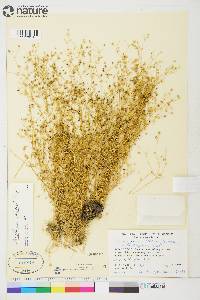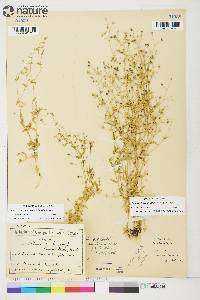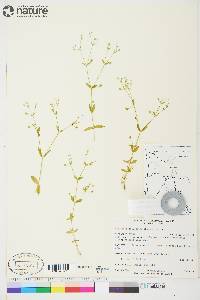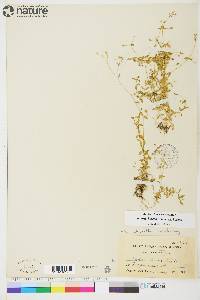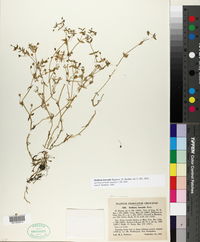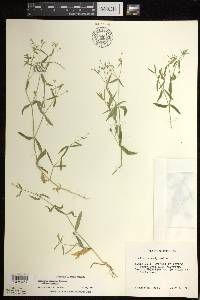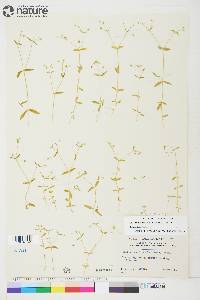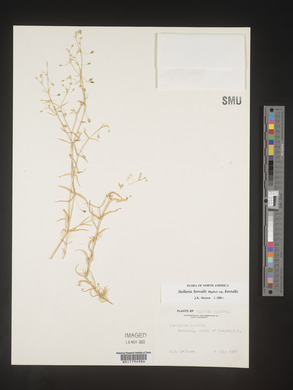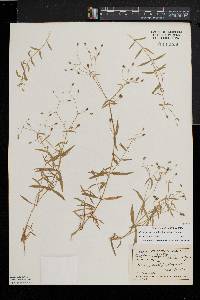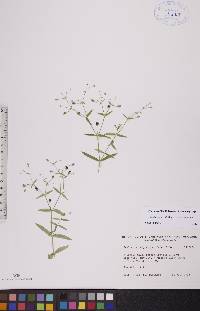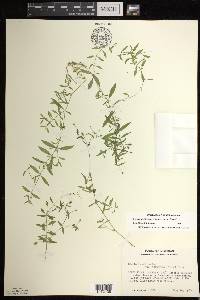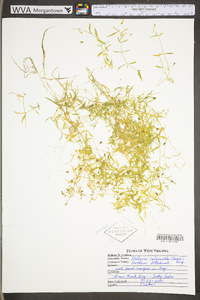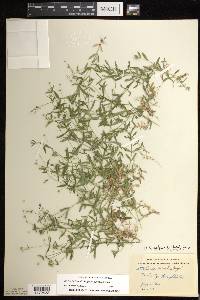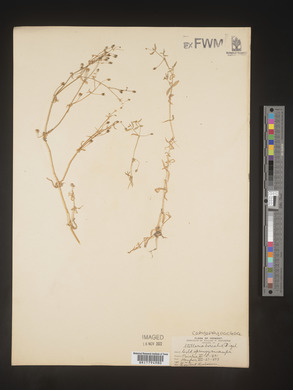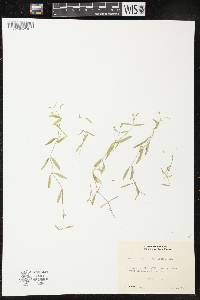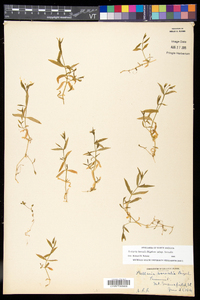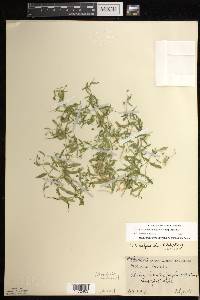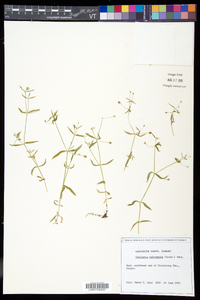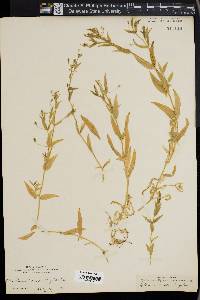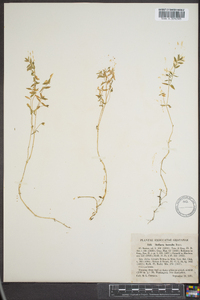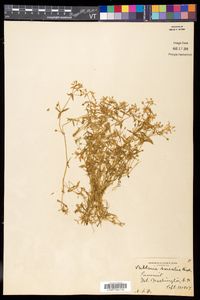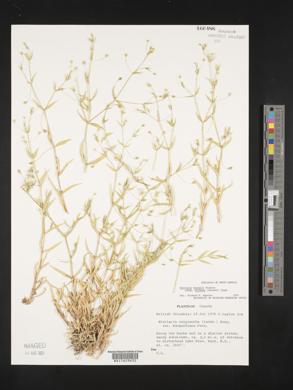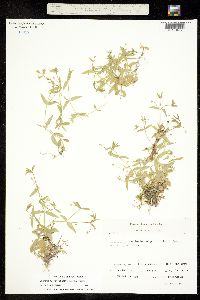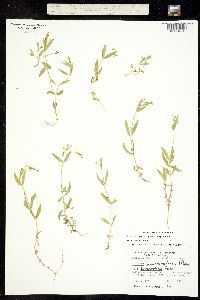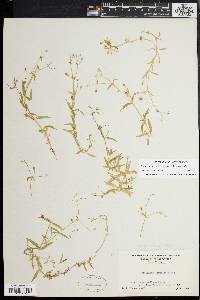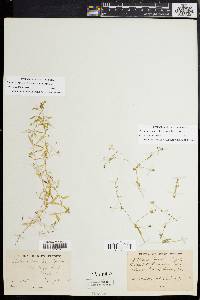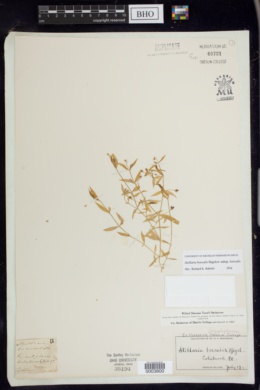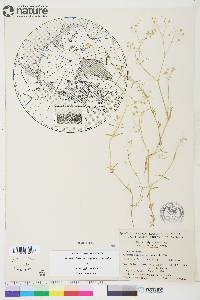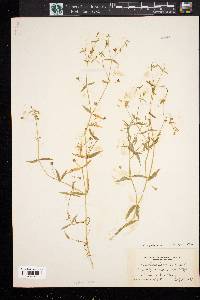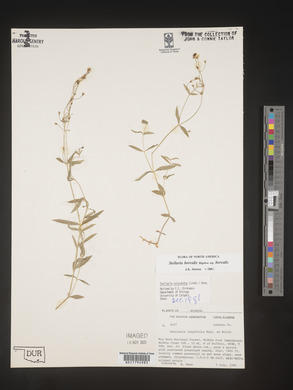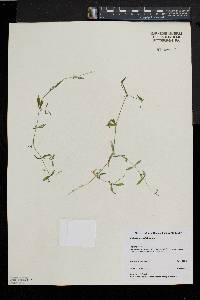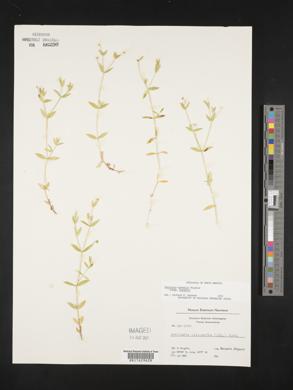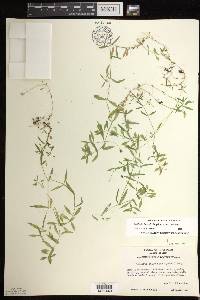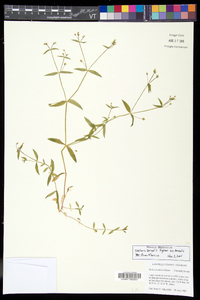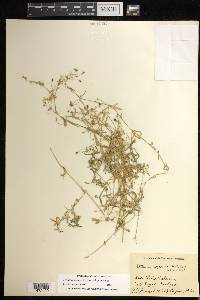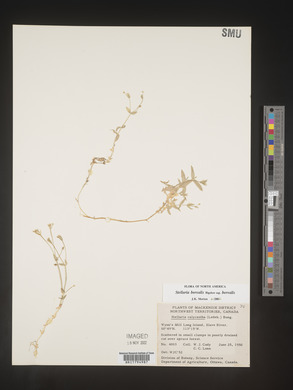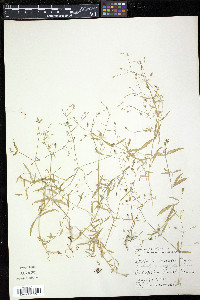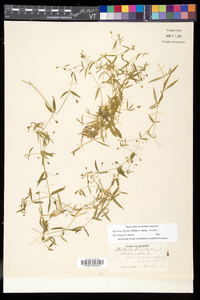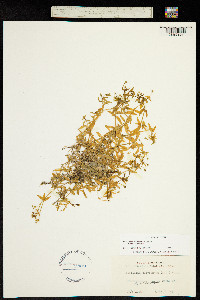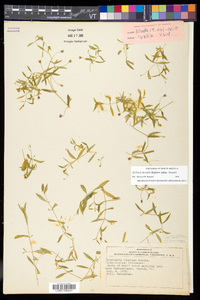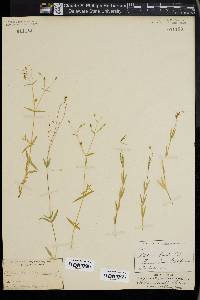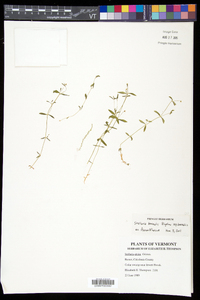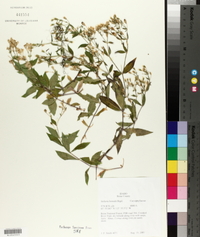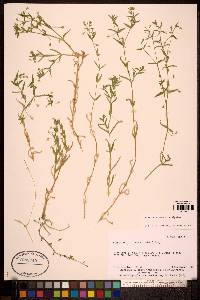
|
|
|
|
Family: Caryophyllaceae
Boreal Starwort
|
Plants perennial, often matted, rhizomatous. Stems prostrate to ascending or erect, usually diffusely branched, sharply 4-angled, (5-)25-50 cm, glabrous to finely papillate, rarely pubescent. Leaves sessile; blade linear-lanceolate to ovate-lanceolate, rarely elliptic-lanceolate, 1-6 cm × 2-8 mm, base cuneate, margins eciliate or scabrid, sometimes ciliate towards base, apex acute. Inflorescences with flowers solitary, terminal and axillary, or terminal, often copious, very lax, leafy cymes; bracts foliaceous, lanceolate, reduced distally to ca. 2 mm, ± scarious. Pedicels erect or patent, usually reflexed at maturity, 10-40 mm, glabrous. Flowers 3-5 mm; sepals 5, 1-3-veined, lanceolate to ovate, 2-5 mm, margins scarious, apex acute, glabrous; petals 5, rarely absent, white or translucent, 1-3 mm, usually shorter than sepals; stamens 5; styles 3, erect to spreading, 0.9-2 mm. Capsules greenish brown or straw colored, ovoid, 3-7 mm, more than 1-1.5 times as long as broad, exceeding sepals, apex acute, opening by 3 valves; carpophore very short or absent. Seeds 10-20, brown, obovate, 0.7-0.9 mm on longest axis, smooth or slightly rugose. 2n = 52. Plants infected with an anther smut, Microbotyrum stellariae (Sowerby) G. Deml & Oberwinkler [Ustilago violacea (Persoon) Roussel, in the broad sense], exhibit flowers with enlarged, reddish anthers. This condition is known in both subspecies, especially in northern areas of the range, but is as yet unknown in Stellaria calycantha, a species previously united with S. borealis by some authors.
Rhizomatous perennial; stems weak, much- branched, angled, glabrous to scabrous, to 5 dm; lvs lanceolate to lance-linear or oblong, 1-4(-6) cm נ2-8 mm, usually narrowed at the base, the margins often ciliate or scabrous; fls (1-)5-50+ in a lax terminal cyme, the lower bracts herbaceous and often foliaceous, the uppermost often reduced and scarious; pedicels 1-4 cm, erect or arching, seldom reflexed; sep lanceolate, 2-3.5(-4.5) mm in fr; pet shorter than the sep, or usually lacking; styles 1-2 mm, at first erect, later spreading; fr rather firm, ovoid, surpassing the sep, often dark; seeds oblong-obovate, 0.7-0.9 mm, obscurely sculptured; 2n=52. Moist, usually shaded places; Greenl. and Lab. to Alas., s. to N.Y., n. W.Va., Mich., Wis., Minn., Colo., and Oreg. May-Aug. Ours is the widespread var. borealis. (Alsine b.; S. calycantha, misapplied) Gleason, Henry A. & Cronquist, Arthur J. 1991. Manual of vascular plants of northeastern United States and adjacent Canada. lxxv + 910 pp. ©The New York Botanical Garden. All rights reserved. Used by permission. |
This project was made possible in part by the Institute of Museum and Library Services [MG-70-19-0057-19].
Powered by Symbiota


